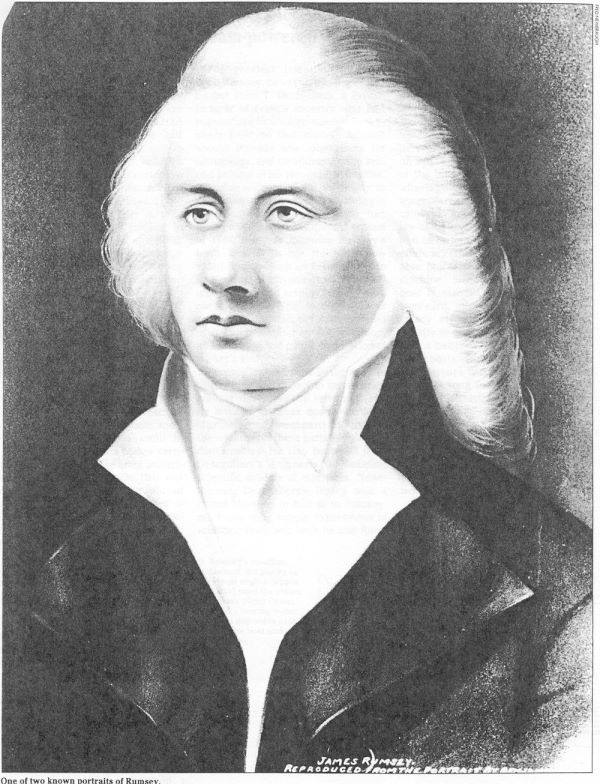Rumsey's Vision: The Steamboat that Changed River Navigation
A replica of James Rumsey’s steamboat at the Rumsey Steamboat Museum at Shepherdstown. Photo: Historic Shepherdstown & Museum
In the late 18th century, the world was on the cusp of a transportation revolution. It was during this time that James Rumsey, an American inventor and entrepreneur, would make his mark with a groundbreaking invention - the steamboat. Rumsey's steamboat, though lesser-known than Robert Fulton's later creation, played a significant role in the development of steam-powered navigation. This article delves into the life of James Rumsey and explores the impact of his steamboat on the future of transportation.
Early Life and Inventive Spirit: Born in 1743 in Maryland, James Rumsey displayed an inventive spirit from an early age. Although lacking formal education, he possessed an insatiable curiosity and a knack for engineering. Rumsey's diverse experiences, from working as a millwright to serving as a surveyor, provided him with a practical understanding of mechanics and the physical forces at play.
Steam Power and the Quest for Navigation: During the late 18th century, steam power was an emerging technology that held the promise of transforming transportation. Inspired by the inventions of James Watt and John Fitch, Rumsey became determined to apply steam power to the field of navigation. He envisioned a vessel propelled by steam, which could revolutionize river transport and overcome the limitations of wind and current.
Rumsey's Vision: The Steamboat that Changed River Navigation

James Rumsey
Rumsey's Innovations and Experiments: In 1784, Rumsey conducted a series of experiments on the Potomac River in Shepherdstown, Virginia (now West Virginia), to test his steam-powered boat. His prototype featured a tubular boiler, a steam engine, and a unique pump system for propulsion. Rumsey's boat was designed to create a forceful jet of water, propelling the vessel forward.
Rumsey's Vision: The Steamboat that Changed River Navigation
Rumsey's Vision: The Steamboat that Changed River Navigation
Image credit: jamesrumsey.org
Successful Demonstrations and Challenges: On December 3, 1787, Rumsey staged a public demonstration of his steamboat, showcasing its ability to maneuver against the river's current. Spectators marveled as the boat cruised upstream, reaching speeds of up to four miles per hour. This achievement marked a significant milestone in the history of steam navigation, proving that steam power could conquer natural obstacles and make upstream travel more efficient.
However, despite his successes, Rumsey faced several challenges. Financial constraints and disputes over patents hindered his progress. His rivalry with Robert Fulton, who also sought to develop steam navigation, further complicated matters. Ultimately, Fulton's steamboat, the Clermont, gained more recognition and commercial success, overshadowing Rumsey's contributions.
Legacy and Impact: James Rumsey's steamboat may not have achieved the fame and widespread adoption of Fulton's Clermont, but his pioneering efforts paved the way for future developments in steam-powered navigation. His innovations, such as the water-jet propulsion system, influenced subsequent inventors in their pursuit of more efficient steam engines and propulsion methods.
Moreover, Rumsey's work laid the groundwork for the transformation of river transport, enabling greater mobility, trade, and commerce. The advent of steam-powered boats revolutionized riverine economies, connecting inland regions to coastal cities and expanding opportunities for transportation and trade.
Rumsey's Vision: The Steamboat that Changed River Navigation
James Rumsey Monument. Photo: Acroterion/Wikimedia
James Rumsey, with his steamboat, played an instrumental role in the early development of steam navigation. His experiments and innovations demonstrated the potential of steam power to overcome natural obstacles and revolutionize transportation. Although his name may be lesser-known in the annals of history, Rumsey's contributions have left an indelible mark on the progression of steam-powered navigation, shaping the course of transportation and setting the stage for future advancements.
References:
# Not That You Should Care, But James Rumsey Invented the Steamboat, Joab Jackson
# Letters of James Rumsey, Inventor of the Steamboat, Wythepedia

No comments:
Post a Comment
Note: only a member of this blog may post a comment.